
Leading up to the 2021 NFL draft, which starts April 29, Yahoo Sports will count down our top 100 overall prospects. We’ll count them down in groups of five for Nos. 100-51, followed by more in-depth reports on our top 50 players, with help from our scouting assistant, Liam Blutman. We reserve the right to make changes to players’ grades and evaluations based on injury updates, pro-day workouts or late-arriving information from NFL teams.
Previous prospect rankings: Nos. 100-96 | 95-91 | 90-86 | 85-81
80. South Dakota State WR Cade Johnson
5-foot-10, 186 pounds
Yahoo Sports draft grade: 5.80 — potential starter
TL;DR scouting report: Small-school big-play threat who reminded everyone of his game-changing talent at the Senior Bowl following his missed 2020 season
Games watched: Minnesota (2019), Southern Illinois (2019), Illinois State (2019), Senior Bowl (2021)
The skinny: Despite having a brother already playing college football at Wyoming (and having been named to the all-Nebraska team as a senior less than an hour away from Lincoln), Johnson was a 0-star Rivals recruit. His only two scholarship offers: South Dakota and South Dakota State. Johnson became a Jackrabbit and redshirted his freshman season before breaking out in 2017 with 23 receptions for 318 yards and three touchdowns and 30 kickoff returns for a school-record 839 yards and two TDs in 14 games.
In 2018, he caught 17 TD passes on his 67 receptions for 1,332 yards and averaged 27.2 yards per kickoff in 13 contests, earning first team All-MVFC mention. Johnson once more earned first team All-MVFC in 2019 and was named AP All-America First Team, catching 72 passes for 1,222 yards and eight scores, rushing eight times for 149 yards and averaging 21.7 yards on nine kickoffs. When the 2020 FBS season was cancelled Johnson originally entered the transfer portal in order to transfer to a Power-5 school for his final season, but he ultimately declared for the 2021 NFL draft. Johnson also attended the 2021 Senior Bowl.
Upside: Quick and sudden receiver with game-breaking ability. Registered plays of 80-plus yards in each of his three seasons. Caught 14 passes with 20-plus “air yards” in his career. Averaged 17.7 yards per catch, 15.2 per rush and 26.7 per kickoff. Great YAC skill. Three-level receiving weapon.
Got vertical often in college — not just a shifty underneath slot receiver. Springy burst off the line and gets up to top speed in a hurry. Gains great acceleration and varies his route speeds to keep DBs a step behind — will lull them to sleep and burst to get open.
Nearly uncoverable in Senior Bowl one-on-ones — when he wasn’t shaking free defenders, he was making contested grabs and/or tiptoeing the sideline. Footwork and route running looked even crisper and sharper there than in 2019 tape. Showed absolutely zero rust in practices during the week despite not playing a game in more than a year.
Plays bigger than his size — tough and holds up well through contact downfield. Uses a variety of different moves on his releases. Will work the middle of the field unfazed by lurking safeties. Competes for the ball at the catch point. Displayed improved hands in 2019 season and at the Senior Bowl. Bigger-than-expected hand size (9 3/8 inches).
Had a fantastic game in near-upset of Minnesota in 2019 — six catches for 90 yards (with two catches at the 1-yard line) and a 25-yard run. Kickoff skill adds value — natural returner who can house one now and then and routinely gain good field position. Experience operating in cold, windy conditions.
Downside: Size a limiting factor — below-average height and weight and very short wingspan (71 1/2 inches) and arm length (29″ inches). No real catch radius to speak of, so separation will be even more crucial at the next level. Lean frame and limited capacity to add bulk.
Could struggle to battle longer-framed corners with anything but quickness and burst and might be relegated to a slot-only role. Might never be a WR1 for an NFL team.
A bit of a bobber and weaver on his routes — can round them off a bit at times. Might not have a rare top gear. Fast but not elite, NFL-level play speed. Doesn’t always gain ideal separation, especially on more linear routes. Seldom faced press coverage.
Lost a year of development when the 2020 season was cancelled — missed out on chance to put more quality tape out, especially in matchup against Nebraska. Only a handful of matchups against NFL-caliber talent.
Received mostly mid-Day 3 summer grades prior to cancelled season. Rhode Island’s Isaiah Coulter was the only FCS wide receiver drafted in 2020 after pro days were cancelled (and Coulter had the benefit of an NFL combine appearance).
Will be an older rookie — turns 23 years old in April. Dropped seven passes on 113 targets in 2018, per Pro Football Focus. Played more than 80 percent of his college snaps in the slot.
Best-suited destination: An ideal third receiver, Johnson profiles as an inside target who can threaten the seam deep and also do ample work close to the line of scrimmage on screens, slants, end-arounds and jet sweeps. Teams such as the Minnesota Vikings, Cleveland Browns, New York Giants, New England Patriots, Miami Dolphins, Detroit Lions, New Orleans Saints and others should be highly interested.
Did you know: Johnson’s father, Clester, played at Nebraska and was a member of the program’s 1994 and 1995 national championship teams. His older brother, C.J., played wide receiver at Wyoming (before a career-ending injury), and his younger brother, Keagan, plays wideout at Iowa.
Clester Johnson said that Nebraska never came calling for Cade in recruiting. “(Former Huskers head coach) Mike Riley was not looking at him,” the elder Johnson told The Athletic. “They didn’t take Cade seriously.”
Player comp: We might be nuts here, but Johnson gives us some (poor man’s) Tyler Lockett vibes. It’s a big comp, and Johnson isn’t going to be there in Year 1, but … he’s really, really fascinating. Another name we came up with: Deion Branch.
Expected draft range: Rounds 3-5
79. North Carolina RB Michael Carter
5-foot-8, 202 pounds
Yahoo Sports draft grade: 5.79 — potential starter
TL;DR scouting report: Elusive, bursty back who adds value in the passing game and would be an ideal complementary back to pair with a bruiser
Games watched: Boston College (2020), Florida State (2020), Syracuse (2020), Virginia (2020)
The skinny: A 3-star Rivals recruit, Carter was named the USA Today Offensive Player of the Year as a senior in high school and committed to the Tar Heels. He wasted no time cracking the rotation as a true freshman, leading the team in rushing TDs (eight), running 97 times for 559 yards and catching 11 passes for 100 yards and one TD in 11 games (two starts) in 2017. In 2018, Carter missed time with a broken wrist, rushing 84 times for 597 yards and two TDs and catching 25 passes for 135 yards and one more score.
As a junior in 2019, he reclaimed a starting role and earned third-team All-ACC, running 177 times for 1,003 yards and three touchdowns and catching 21 passes for 154 yards and two touchdowns in 13 games. Despite sharing the load with Javonte Williams in 2020, Carter was even more effective last season, averaging an FBS-best 8.0 yards per carry (156 carries, 1,245 yards, nine TDs) and catching 25 passes for 267 yards and two touchdowns. He attended the 2021 Senior Bowl.
Upside: Big-play back who led the country in runs of 15 yards or longer last season. Forces a ton of missed tackles and readily gains yards after first contact. Escape artist — gets out of jams with comical efficiency. Nasty jump cut, patience and vision — good for a “ohhhh!” run or two a game.
Strong vision, low center of gravity and slippery running style make him hard to bring down. Quick, light and active feet in space. Works laterally extremely well and has shown excellent one-cut ability on zone runs. Operated in a diverse offense that featured a steady diet of both zone and man runs.
Hides behind his offensive linemen and reads and uses his blocks well. Patience to let blocks develop before squirting out and turning on the jets. Looks like a great fit in a zone-heavy scheme with enough punch and toughness to hit the hole effectively inside the tackles. Will lower his shoulder and fight for yards in traffic. Tougher than he gets credit for.
Brings third-down value. Catches the ball cleanly and should be a reliable checkdown option in the passing game. Can separate from man coverage when asked. Competes in pass protection — willing to stick his nose in against bigger blitzers.
Improved ball security — only one fumble over final 28 college games (after four fumbles in first 15 college outings). Good hands in the receiving game — only two drops over the past two seasons on 54 targets, converting 46 of those passes into receptions. Solid kick-return ability, averaging 24.5 yards per return in 2019.
Downside: Size will always be a limiting factor. Put on some weight prior to Senior Bowl but is believed to have played closer to 190-195 pounds for most of his college career. Short wingspan (73 1/2 inches), arm length (29 1/8 inches) and hand size (9 inches). Stumpy frame that might not support a ton of added bulk.
Limited route running on tape — mostly asked to catch screens and flare passes, seldom asked to run anything downfield. Pass protection was inconsistent. Showed some promise in this department in 2019 but wasn’t as effective last season or in one-on-one drills at the Senior Bowl. Could require a learning curve with more demanding and sophisticated protection schemes in the NFL.
Long speed a question — might not be a burner at the position. Doesn’t always pull away from safeties and linebackers at the second and third levels. Will overuse the jump cut — gets too cute as a runner at times.
Can be seen going down with somewhat light contact. Likely won’t be used extensively as an inside runner in the NFL. Not built to be a volume runner — only three career games (out of 44) with 20-plus touches. Set back by injuries earlier in his college career and back in high school.
Best-suited destination: Carter has the look of an ideal complementary back who should see a diet of 12-15 touches a game and be paired with a more physical runner to handle more of the dirty work.
Did you know: In his final college game, Carter ran for 308 yards — the fourth-most in an ACC game ever — and two touchdowns on 24 carries against Miami to help lead the Tar Heels to a 62-26 win and a spot in the Orange Bowl. Carter finished his UNC career with 3,404 rush yards (fourth-most in program history) and 28 total TDs (11th most).
Player comp: His peak might be Aaron Jones. But Carter’s floor would be something on the Chase Edmonds-Darrell Henderson spectrum. More likely, he’ll end up somewhere in the middle.
Expected draft range: Rounds 3 or 4
78. Boston College TE Hunter Long
6-foot-5, 254 pounds
Yahoo Sports draft grade: 5.78 — potential starter
TL;DR scouting report: Solid, ascending receiving talent with NFL size and great contested-catch ability, although Long’s blocking is a real work in progress right now
Games watched: Duke (2020), Notre Dame (2020), North Carolina (2020), Clemson (2020)
The skinny: A 2-star Rivals recruit out of Deerfield Academy, Long got overlooked in recruiting but landed with the Eagles and redshirted as a freshman in 2017. The next season, he caught four passes for 103 yards and two scores in 12 games. Long took another step forward in 2019, catching 28 passes for 509 yards and two touchdowns and earning third-team all-ACC. And in his redshirt junior season in 2020, he snagged a team-high 57 passes for 685 yards and five scores in 11 games, named to the second-team all-conference team. Long forwent his senior season to declare for the 2021 NFL draft and played in the 2021 Senior Bowl.
Upside: Textbook NFL size for the position — nice mass and weight distribution, elite wingspan (83 inches) and good arm length 33 3/4″ inches).
Outstanding in traffic — contested-pass stud who uses his body to shield off defenders, times up his jumps well and competes for jump balls. Wide radius to haul in poor throws. Bailed out his quarterback more than once adjusting to off-target throws. Plucks some impressive low balls before they hit the ground.
Fluid athlete who moves well and can get down the seam in a hurry. Will be a tough cover for some linebackers. Coordinated feet and improved route running. Career 14.8-yard receiving average and hauled in grabs of 51 and 72 yards in 2019. Runs well for a man that size. Can turn short and intermediate catches into long gains.
Key element of BC passing game in 2020 — six games with eight or more targets (including two 12-target games and a 17-target game). First-down machine who moved the chains on 62 percent of his catches. Trusted, reliable receiver who has the requisite ball skills to make it as a TE1 in some systems. Works back to the ball and operated well with some run-around BC quarterbacks who looked to extend plays.
Showed some moderate improvement as a run blocker last season. Keeps his feet churning in the ground game and was better at sustaining blocks longer. Has the potential to grow as a blocker, especially in pass protection.
Can man all the TE spots (in-line and slot, as well as out wide) and saw a few snaps in the backfield last season as a blocker. Quality special-teams performer his first two seasons — saw time on three of four major units (everything but kick coverage) as well as on FG/extra-point team. Ascending talent who should be a better pro than he was a college player.
Downside: Not at all dominant as a blocker despite a nice frame. Allows defenders to get their hands inside and doesn’t flash many dominant reps. Pass-blocking effectiveness took a dip in 2020 with more opportunities. Lacks any semblance of a mean streak with the dirty work.
Didn’t gain as many yards after contact in 2020 — used more as a post-up target in the passing game. Route running still needs work — will round off some routes and lacks sharp-cut ability.
Had some frustrating drops — still lets some short, catchable passes slip through his grasp. Hand size (9 3/4 inches) is below-average for the position.
Played progressively less as an in-line tight end as his college career evolved. Late developer — didn’t become key contributor until two years ago and still needs refinement in his game. Rookie season could result in incomplete performance.
Not a burner. Likely will test slightly above-average athletically and lacks a top gear. Not very shifty in space. Play strength registers as average to below-average. Will be 23-year old rookie.
Best-suited destination: Long profiles as a TE2 early in his career who could ascend to TE1 status by his second or third NFL season. His blocking needs work, and he likely will be a part-time weapon in the passing game until he fully develops.
Did you know: The NFL has produced only 51 players who attended high school in New Hampshire, and Long could be the 52nd. The only active NFL player from New Hampshire is also a tight end: the Jets’ Ryan Griffin.
Player comp: Long is sort of on the Dallas Goedert-Austin Hooper spectrum.
Expected draft range: Rounds 2 or 3
77.UCF S Richie Grant
6-foot, 200 pounds
Yahoo Sports draft grade: 5.78 — potential starter
TL;DR scouting report: Only so-so size and athleticism, but Grant’s terrific instincts, playmaking ability and experience give him a chance to be an early NFL contributor
Games watched: Stanford (2019), Marshall (2019), Georgia Tech (2020), Tulsa (2020), Cincinnati (2020)
The skinny: A 2-star Rivals recruit, Grant committed to UCF and redshirted his first year in 2016 and was a key reserve in 2017, making 32 tackles (one for loss), a forced fumble and two pass breakups. In 2018, Grant became a national name by hauling in six interceptions (tied for third in FBS) and making 109 tackles (three for losses), three pass breakups and three forced three fumbles in 13 starts. He was all-AAC that year and in 2019, when he had 78 tackles (four for losses), one interception (a pick-six in the bowl game) and eight pass breakups in 12 starts. Grant made the all-conference first team again as a redshirt senior in 2020, with 72 tackles (3.5 for losses), three interceptions, six pass breakups and two forced fumbles in nine games, being named one of three finalists for the Jim Thorpe Award (given to the nation’s top defensive back). Grant attended the 2021 Senior Bowl.
Upside: Playmaking knack is undeniable — 10 interceptions, 16 passes defended, five forced fumbles and two recoveries over the past three seasons. Appears to have a clutch gene — big plays tended to come in big moments. Notable piece of UCF team that went 13-0, 12-1, 10-3 and 6-4 in his four seasons.
Excellent work from deep safety spot in Senior Bowl team sessions — unofficially led the week in practice interceptions and displayed a keen knack for breaking on deep and intermediate passes. Plays like a hawk hunts, scanning his prey.
Dependable single-high safety who rarely gets beat deep. Reads quarterbacks’ eyes, sees trends and understands offensive concepts to gain a step. Heady, smart, instinctive player. Nice range to make plays all over the field. Smooth backpedal and good transition skills to plant, drive and close.
Watch here as Grant ranges from the far hashmark all the way to the numbers, traversing some 30 yards against Tulsa and beating the receiver to the overthrown ball for a pick:
Has great versatility to factor as a box safety, deep-halves safety or covering backs and tight ends. Can even match in coverage with some less fleet receivers. Underrated blitzer who was allowed to do that more as a redshirt senior.
Urgent player who brings intensity to a defense. Strong tackler who will square up a ballcarrier and hit them head on. Tough-minded player. Seeks to punch and rip balls out after catches. Solid wingspan (77 5/8 inches) and hand size (9 1/2 inches).
Great experience — 46 career games, three-year starter and more than 3,000 snaps logged on defense and special teams. Came back to school in 2020 after receiving draftable grades for the 2020 NFL draft. Pro-ready player who could start as a rookie.
Extensive special-teams experience all four seasons and on all four major units (coverage and return). Also has limited experience as a returner. Practices and prepares hard — strong work ethic. Engaging teammates credited with becoming a leader over time in the program. Pushes and challenges teammates to be better.
Downside: Average size and athleticism. A shade under 6-foot, a lean build (played in the 190-pound range in college) and average arm length (31 1/2 inches). Might only have so much more mass potential to add to his frame. Gives up some length when tasked with handling tight ends. Plays deep (fear of getting beat long?) and can be nickel-and-dimed underneath.
Wasn’t as effective in one-on-one coverage in Senior Bowl drills — might lack the quickness to handle receivers in man coverage at the next level. Speed is a question — some scouts believe he’s a 4.6 guy. Average athlete for the position and will have to get by based on film study, preparation and instincts.
Move to more of a box role in 2020 came with some coverage slip-ups. Struggles a bit with tracking shiftier players in space. Missed tackles can come in bunches (even though he was improved in that area in 2020). WIll fly in over-aggressively or take shaky angles to the ball and isn’t as effective tackling in space.
Played in very talented Golden Knights secondary — teammates Aaron Robinson, Tay Gowin and Antwan Collier are all NFL talents. Captain of defense that allowed a ton of chunk plays last season. Needs to continue working on field communication skills.
Older for a rookie — turns 24 years old in November. Came into the 2020 season earning some Day 3 grades from scouts.
Best-suited destination: Grant has the instincts, temperament and experience to be a Day 1 rookie starter, but at worst he would be a fine rotational safety early who contributes heavily on special teams. He’d be a great fit for teams that like to employ single-high and two-deep coverages, with Grant able to fill either and also come up in the box on occasion.
Did you know: Grant campaigned UCF head coach Josh Heupel to give him snaps in his final season. In high school, Grant was best on defense, but he also topped the 1,000-yard receiving mark as a wideout.
“I’m an offensive player and I was in high school, so I know I still have got it,” Grant said, via the Orlando Sentinel. “I’m on coach Heupel all the time about giving me a few reps over there. I’m just waiting.
“I just want to touch the ball, to be honest. I miss that.”
Alas, it was to no avail. Grant never did see time on that side of the ball.
Player comp: Similar in play style and athletic profile to Rams safety John Johnson III.
Expected draft range: Top-75 pick, possibly even early in Round 2
76. Georgia CB Eric Stokes
6-foot-1, 185 pounds
Yahoo Sports draft grade: 5.79 — potential starter
TL;DR scouting report: Long, lean, extremely fast man corner whose lack of physicality could be an issue for some teams
Games watched: LSU (2019), Arkansas (2020), Auburn (2020), Tennessee (2020), Alabama (2020)
The skinny: A 3-star Rivals recruit, Stokes committed to the nearby Bulldogs and redshirted his first season in 2017. The following year, he earned three late-season starts and was named UGA’s co-Most Improved Defensive Player winner, making 20 tackles (one for loss) and nine pass breakups in 13 games. As a sophomore, Stokes was a full-time starter, making 38 tackles, one sack and nine pass breakups in 14 games. He was named second-team all-SEC in 2020, making the first four interceptions of his career (running back two for touchdowns) and breaking up four more passes in nine games. Stokes declared early for the 2021 NFL draft and opted out of Georgia’s bowl game to begin his draft prep.
Upside: High-school track speed — he ran a 10.39-second 100-meter dash and won the state 200 meters as a senior — shows up on tape. Field-fast corner who can run vertically with just about any receiver out there. Reportedly ran a sub-4.3 40 during pre-draft workouts last week. Athletic profile appears to be sterling.
Long frame meant to handle press-coverage duties. Well-versed in that coverage over three years at UGA — played a lot of two-man, cover-1 and cover-0. Asked to cover on an island quite a bit and often delivered sticky reps.
Shows the twitch to change direction against shifty wideouts. Clicks and closes in coverage fast. Rarely tested in coverage last season. Didn’t allow a catch longer than 35 yards in three seasons, per PFF. Shown some danger with the ball in his hands — scored on a punt return as a freshman and housed two interceptions for TDs in 2020.
Held up against bigger receivers. Plays the ball at the catch point. Good length to high-point the ball and disrupt receivers’ timing and positioning. Doesn’t back down from receivers’ contact and will match their physicality.
Flashes some blitz potential. Reliable, drag-down tackler. Maintains a businesslike demeanor. Quiet and trusty. Consistent performance over his three seasons. Tested against the best of the best in the SEC — ample experience in big-game settings. NFL won’t be a massive jump for him.
Downside: Long, lean build — could use some added bulk to fill out his frame. Lean legs and skinny ankles. Play strength appears to be an issue — more of a big finesse corner.
Run defense is considered below-average. NFL teams will test him and run right at him until he shows he can disengage from blocks and wrap up consistently. Might never be great in this area.
Can get handsy in coverage. Got away with what looked like several illegal contact flags last season. Will sag too much in off-man coverage. Footwork at the top of routes can get a little clunky — takes fasle steps and gets feet crossed. Lateral quickness might not be quite as impressive as his straight-line speed.
Ball skills can be called into question. Zero INTs his first two seasons. Interceptions tend to find him, rather than the other way around. Must play the ball better. Not as comfortable in zone coverage.
Played in unusually talented, deep secondary and on very good defense on the whole. Limited slot duty — played fewer than 100 snaps inside over the past three seasons.
Best-suited destination: Ideally, Stokes would line up as a man-coverage corner on the outside. There might be some teams that want to try him inside, but Stokes’ long speed and good length scream outside corner to us.
Did you know: Stokes earned the nickname of “Dirty Red” for his freckles and reddish hair.
Player comp: There are some similarities, style-wise, between Stokes and Falcons 2020 first-rounder A.J. Terrell, although Terrell’s build is a little more filled out and he plays with better strength.
Expected draft range: Top-60 pick
More from Yahoo Sports:

Must See
-


Football
/ 2 months agoHuskers Fight Hard but Fall Short Against UCLA
LINCOLN – The Nebraska Cornhuskers gave it their all on Saturday, with standout efforts...
-
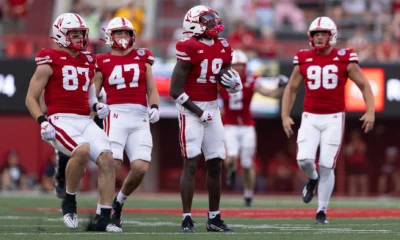

Football
/ 2 months agoGAMEDAY: Nebraska Set to Face Undefeated Indiana in Key Big Ten Showdown
Bloomington, IN – It’s Game Day, Husker Nation! Nebraska (5-1, 2-1 Big Ten) returns...
-


Football
/ 3 months agoBlackshirts Shine as Nebraska Tops Rutgers 14-7 on Homecoming
Lincoln, NE – Nebraska’s Blackshirt defense played a starring role in the Huskers’ 14-7...
By Chris


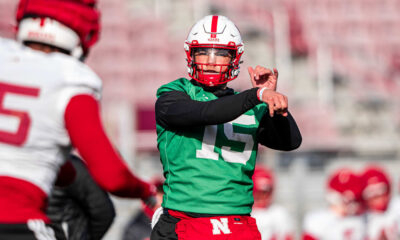

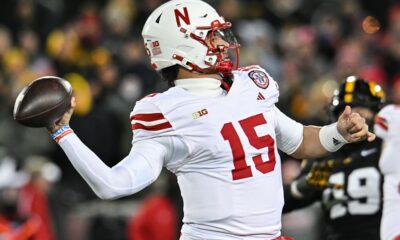

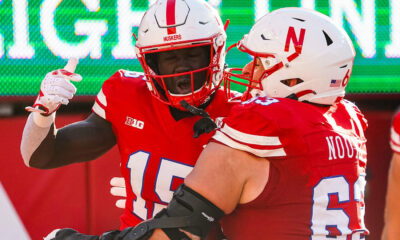

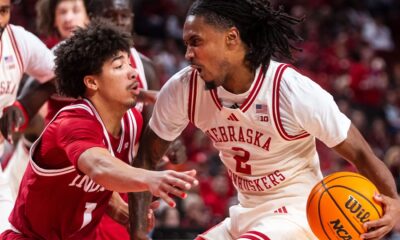

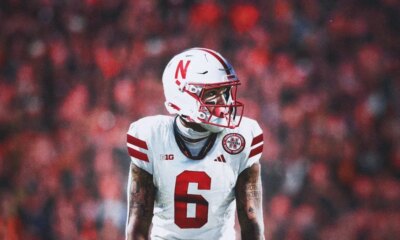






You must be logged in to post a comment Login